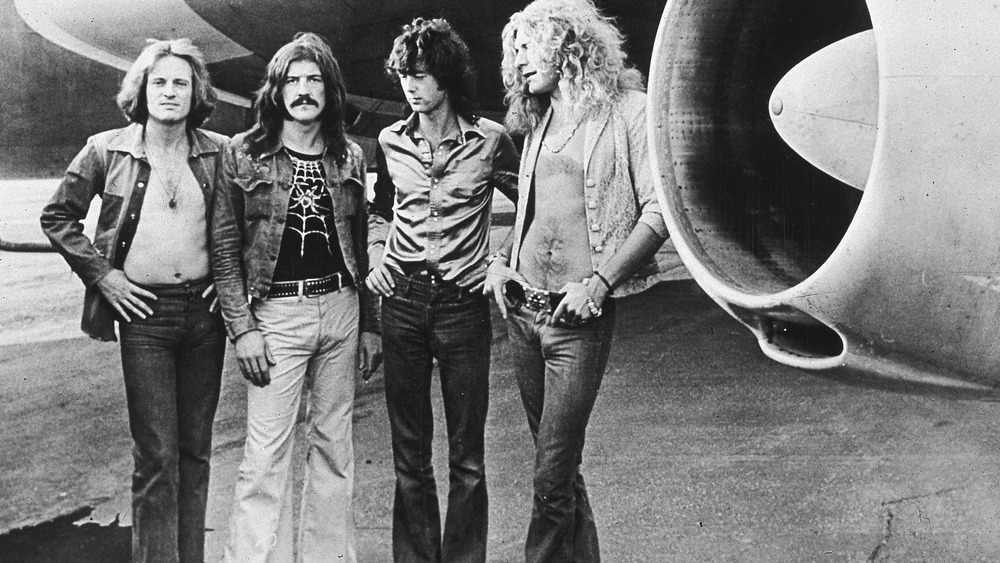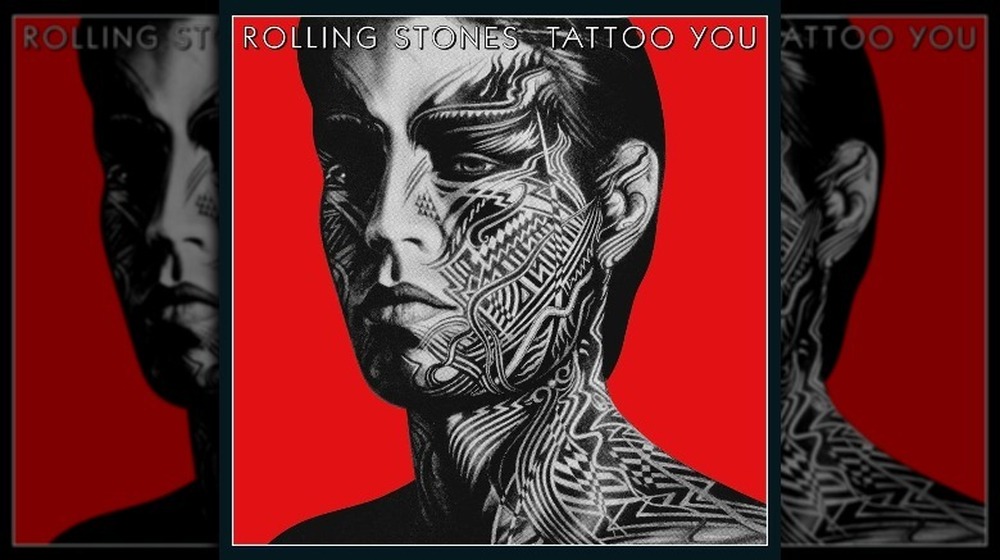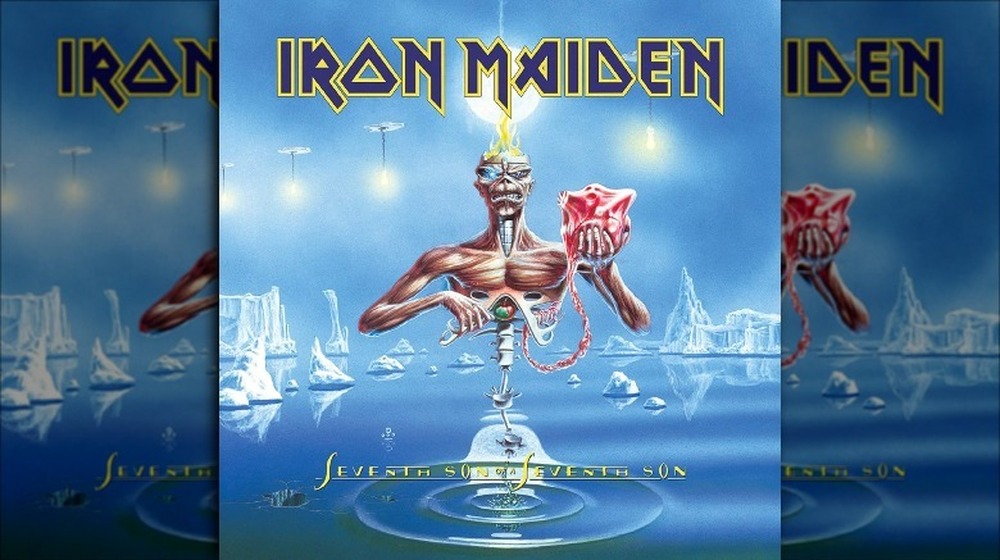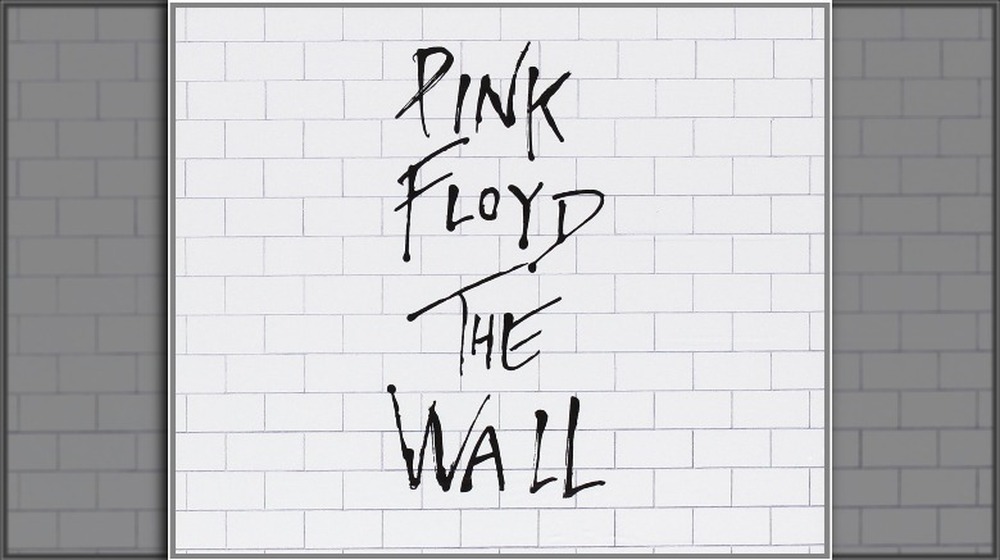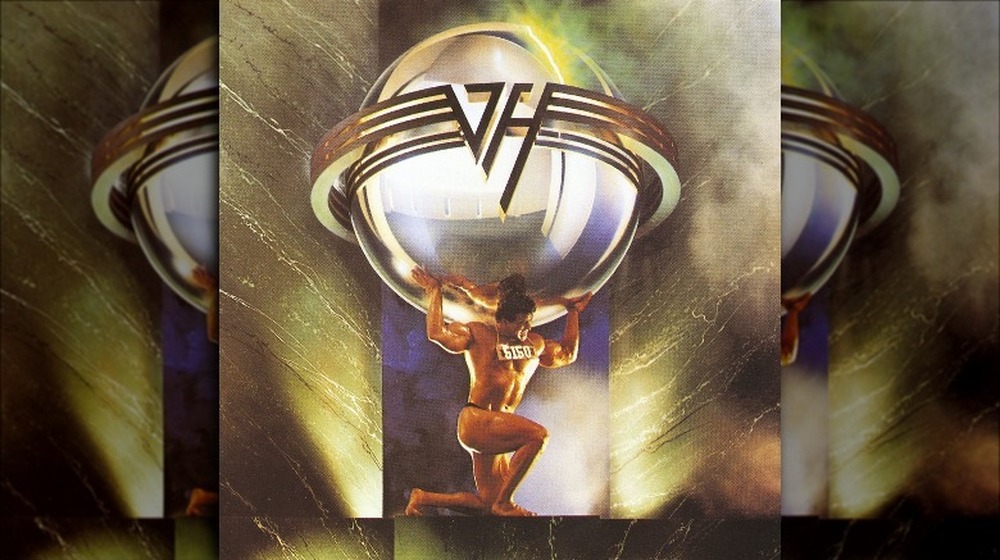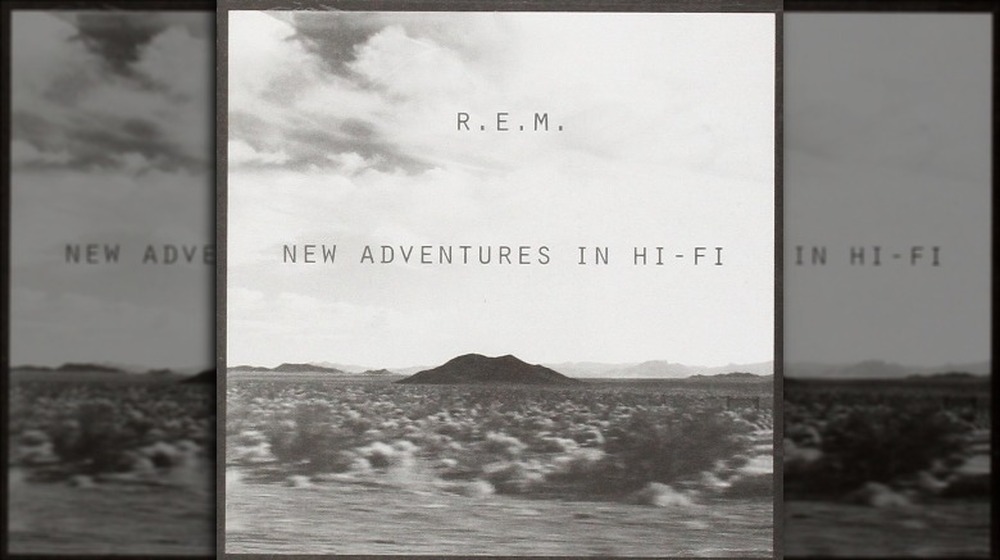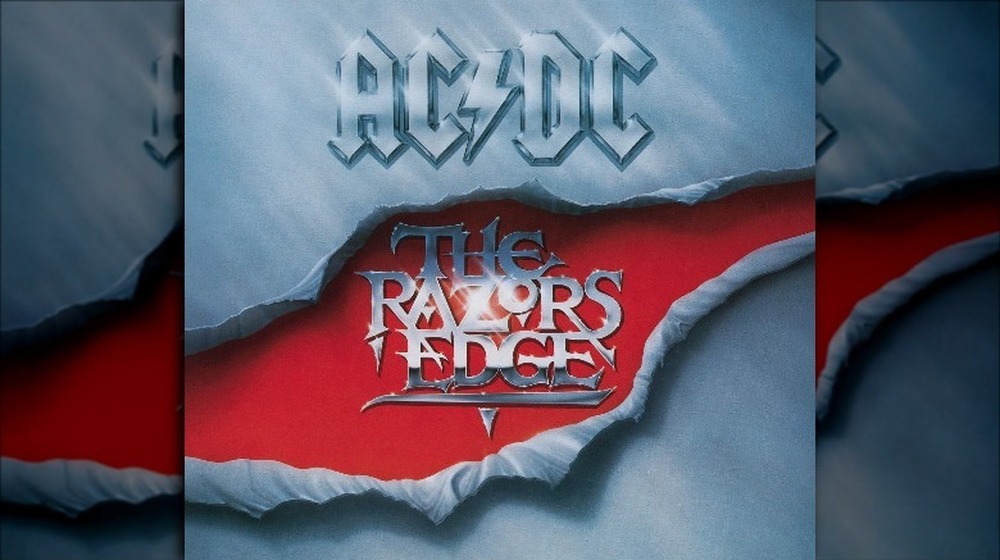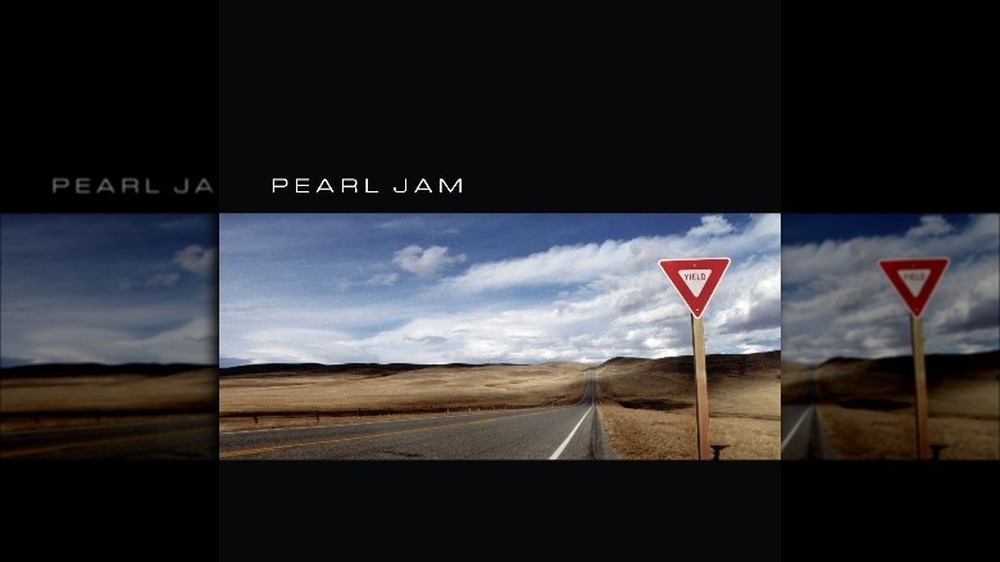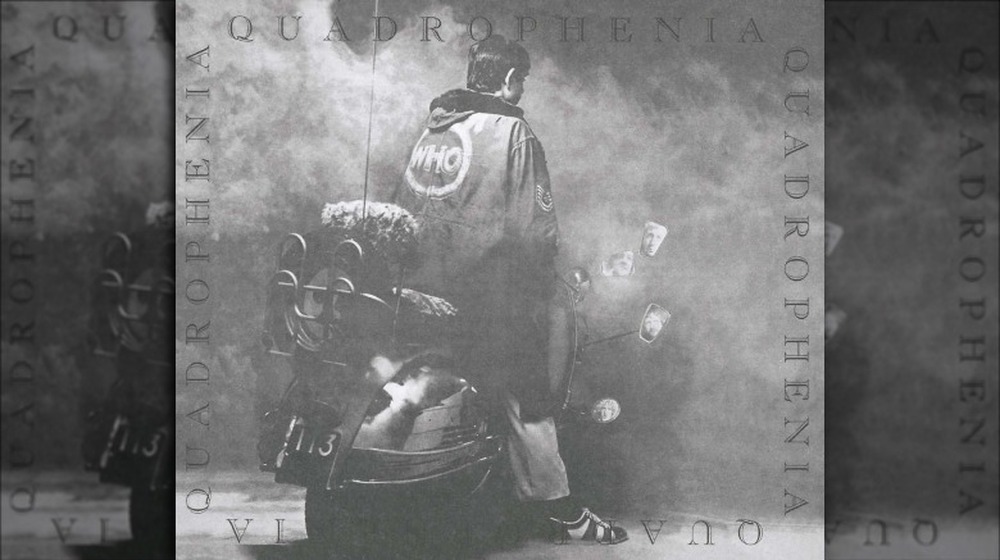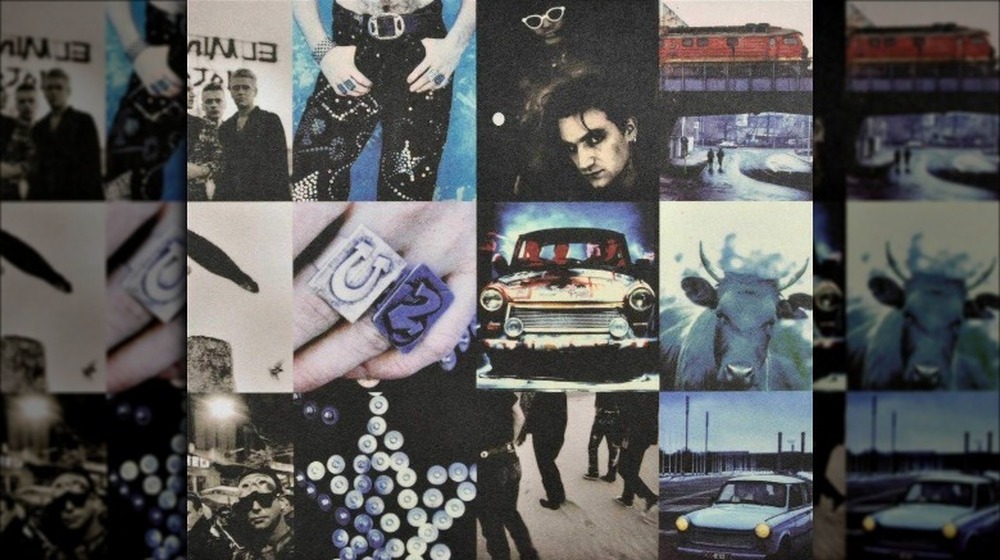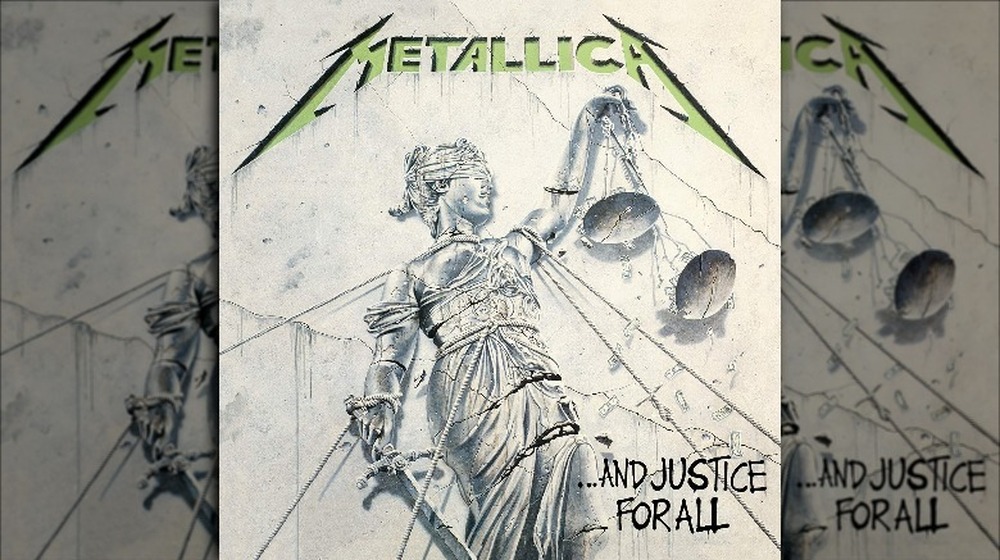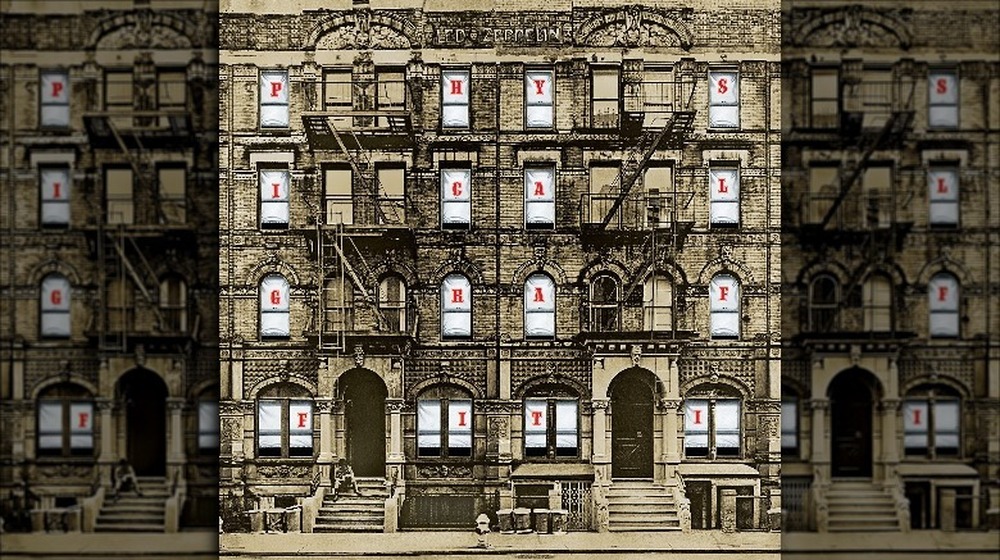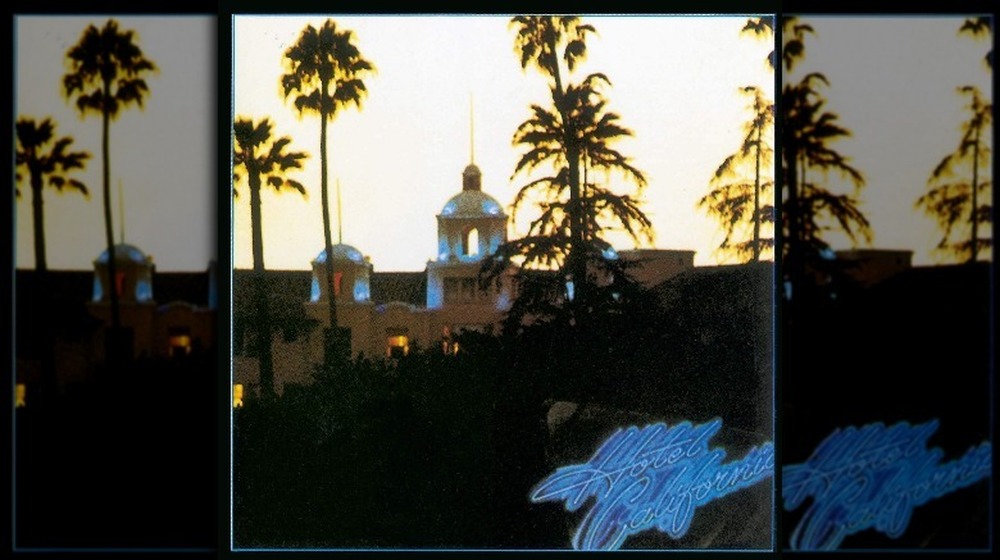The Last Great Album These Legendary Bands Released
Creativity is mysterious, and popular success can be fleeting. Putting both together is a challenge, but certain bands throughout music history have managed it consistently, earning them legendary status — think The Beatles, Led Zeppelin, U2, bands that go through long periods where every album they drop is good-to-great.
But even the greatest bands run out of steam at some point. Sometimes it's a final blast of genius and they're gone, sometimes they hang around long past their sell-by date, but there is always a final roar of greatness followed either by silence or a slow decline. Figuring out where that line is for a legendary band can be educational in terms of music trends, the music business, and the creative process, but it can be challenging because of the hype surrounding new releases. When a legendary band puts out new music, critics and fans can be distracted by the excitement. It takes time to see the moment when a band loses their touch clearly.
For these bands, that moment has become horribly clear. One can look back soberly on their discography and pinpoint precisely when they went into decline, because the last great album these legendary bands released can be clearly identified.
The Rolling Stones: Tattoo You
By the 1970s, The Rolling Stones were one of the biggest rock bands in the world. In the first half of the decade, they released some of the best rock albums of all time —Sticky Fingers, Exile on Main St., Goats Head Soup, and It's Only Rock 'n Roll. But then they hit a wall — their internal relationships were crumbling, their drug use was astronomical, and their contempt for their own audience came out in three slapdash albums where they chased disco trends and generally sounded tired.
When the time came to record what would become 1981's Tattoo You, there was reason to expect more decline. Instead, as Ultimate Classic Rock puts it, the album was "a timely reminder that they could still be the Stones when they remembered not to just pretend to be the Stones."
The secret, as Pitchfork points out, is that the album doesn't actually contain any new material. If it sounds like the second-best Rolling Stone album from the 1970s, that's because most of the songs on it were rejects from recording sessions for those earlier, better albums — including "Start Me Up," which Sound on Sound tells us started life in 1975 as a reggae song.
In other words, the album coasts on old ideas — but it worked. After this they went back to chasing trends, with disastrous results, until finally giving up and going back to their old sound to keep the tour money coming in.
Iron Maiden: Seventh Son of a Seventh Son
Iron Maiden has been around for more than 45 years and has gone through several lineup changes. The most stable and successful lineup came together when Bruce Dickinson joined as lead singer in 1981, and drummer Nicko McBrain joined in 1982. Between 1981 and 1986, the band released a string of albums that established them as one of the best heavy metal bands in the world. Their 1986 album, Somewhere in Time, was received as a bit of a disappointment, however, especially after the complexity of 1984's Powerslave.
As Louder reports, the band felt the pressure to deliver something amazing. A concept album loosely based on a novel by Orson Scott Card, Ultimate Classic Rock pegs it as a near-perfect balance between heavy music, innovative, creatively risky songwriting choices — and poppy, catchy hooks. That pop sound alienated some fans at first (the lead single, "Can I Play with Madness," is an earworm of the highest order), and the album that followed was as epic and filled with intricate guitar lines as any fan could hope.
Maiden would never manage anything quite as complex and risky. Spooked by the experimentation, the band would attempt a back-to-basics pivot that felt stale, then parted ways with Dickinson and spent several years floundering. Everything that came after sounds like they're trying to imitate the classic 1981-1989 sound — and usually failing.
Pink Floyd: The Wall
Sometimes it's hard to remember that Pink Floyd had other albums aside from The Dark Side of the Moon and The Wall, especially considering the lingering influence of both. While you can debate which one is better or more influential, one absolute fact is that The Wall was the last time the band was great.
As Ultimate Classic Rock notes, The Wall is the last time the band — Roger Waters, David Gilmour, Richard Wright, and Nick Mason — sounded like a band, a cohesive creative unit. Although Waters dominated the songwriting and concept of The Wall, Gilmour's influence is evident throughout. The combination of Waters' visceral, personal storytelling and the band's incredible level of musical ability made the album an all-time classic.
But as The Conversation reports, the recording sessions destroyed the band. Waters had been taking more and more creative control of the band, squeezing out the ideas and songs written by other members, and everything came to a head with The Wall. Keyboardist Wright left the band, and their next album, The Final Cut, was a glorified Roger Waters solo album. Then Waters himself left and tried to sue Gilmour and Mason to stop them from using the name Pink Floyd. When Gilmour reformed Pink Floyd a few years later (without Waters), they delivered some hit albums but nothing near as good.
Van Halen: 5150
Most people would argue that 1984 was Van Halen's last great album — it was the last album made with the classic lineup of the band that included lead singer David Lee Roth, was a bit of a comeback after two disappointing albums, and delivered some of the band's most iconic hits, including the all-time classic "Jump."
But when Roth left the band due to creative differences (translation — working with Eddie Van Halen had become impossible), Van Halen surprised everyone by hiring Sammy Hagar, a singer who on paper seemed like a terrible choice. That meant the band had something to prove. The result was an album that Ultimate Classic Rock says "contains a lot of greatness" and calls it a "commercial powerhouse unlike any other Van Halen album."
As Rhino notes, there's a reason 5150 was Van Halen's first number one album (and it's not just because Michael Jackson's Thriller froze 1984 out of the top spot). The album continued the more pop-oriented and keyboard-heavy sound explored on 1984 but also brought a more mature songwriting style (to be fair, anyone would have been more mature than David Lee Roth) and hyped up the hard rock sound of Eddie Van Halen's guitar — quite a feat. This was the last Van Halen album that got buzz, that people argued over. After this, they pursued safer, poppier songs and never again achieved true greatness.
R.E.M.: New Adventures in Hi-Fi
R.E.M. pulled off one of the most impressive transitions from college-radio darlings to massive unit shifters ever staged. What made the band's move into superstardom and chart-topping success remarkable is that they kept their weird, introspective style and experimented on every album and still managed to sell millions of copies.
As noted by Consequence of Sound, 1996's New Adventures in Hi-Fi should have been a disaster. The band recorded it while on a grueling tour, laying down tracks during sound checks before shows and anywhere else they could grab the time — not exactly conducive to careful work. On top of that, the band was on the cusp of losing founding member Bill Berry, who left the band shortly after the album was released in part due to the stress of that tour.
But as noted by NME, the result is anything but fragmented or chaotic. This is the last time the band delivered an album that marries experimental stuff like "E-Bow The Letter" with anthemic rock songs like "Departure" without missing a beat and the last time the band sounds energetic and excited about its own material.
After Berry's departure, the band continued on for five more albums. There are some good songs there, but decline had set in, and the band never again released anything you would call "essential."
AC/DC: The Razor's Edge
While non-believers often joke that every AC/DC song is basically the same, the truth is the band takes some basic blues-rock ingredients and adds a surprising amount of complexity, then fuses those intricate riffs to a rhythm section that rivals atomic clocks in terms of accuracy.
Still, the band has been coasting for a long, long, long time. Since 1990, in fact, when they released their last truly great album — The Razor's Edge.
As noted by Ultimate Classic Rock, the band struggled after the enormous success of 1980's Back in Black. The three albums released after that weren't exactly failures, but they were considered mediocre compared to that legendary collection. When time came to record a new album for the new decade, the band was in shambles — rhythm guitarist Malcolm Young checked into rehab for alcoholism, their drummer Phil Rudd quit, and lead singer Brian Johnson was going through a brutal divorce.
The saving grace was a disaster — Johnson had to take a leave of absence, so he couldn't write any lyrics. Angus and Malcolm Young suddenly had complete creative control. The result is a blast of greatness Louder calls "hard-hitting, back-to-basics album," filled with the sort of inventive melodies you don't usually associate with AC/DC — not to mention the last Angus Young guitar riff that truly pushed boundaries, the epic single-string opening of "Thunderstruck." They still sell millions of albums, but there hasn't been a surprise since.
Pearl Jam: Yield
Pearl Jam remain the last band standing from the grunge era, one of the only 1990s alt-rock bands still together and still releasing albums. If you forgot about Pearl Jam, once probably the most important band in the world, you can be forgiven because it's been a minute since they had any real impact on rock music at all. In fact, it's been 23 years.
After exploding onto the scene with Ten and Vs., Pearl Jam followed with two underwhelming, confusing albums — Vitalogy, which still had a lot going for it, and the aggressively weird No Code. As Loudwire explains, this disastrous artistic direction was driven by lead singer and primary songwriter Eddie Vedder, and he was increasingly unhappy being a "rock star" and expressed that in increasingly alienating music. When No Code was the first Pearl Jam record to disappoint in both sales and critical reception, an exhausted Vedder took a step back and urged the rest of the band to write material.
The result was 1998's Yield, and for a brief, shining moment Pearl Jam roared back in all its glory. As JOE notes, the album was a back-to-basics triumph that took everything the band had learned in a decade of superstardom and combined it with their old energy and guitar mastery. The songs were tight, purposeful, and fun.
Sadly, the band followed this with their hands-down worst album (Binaural), which totally crashed their momentum. They never recovered.
The Who: Quadrophenia
The Who are often remembered largely for their iconography — Pete Townsend's windmill guitar strumming, smashing instruments on the stage — but for a while they were one of the most ambitious bands in the world. They made history with one of the earliest rock operas, Tommy, in 1969, and the follow-up, Who's Next, was the result of an even more ambitious idea that failed. They came roaring back in 1973 with Quadrophenia, the last time the band was great.
A concept album telling the story of a young man dealing with a split personality as he seeks meaning and purpose in his troubled life, Far Out Magazine ranks it as the third-best album by The Who overall and notes that it benefited from a singular vision — the whole album was written and arranged by Townsend. Billboard calls the end result "90 minutes of the Who at its very best." And according to Billboard, Townsend himself admits that it was the last great Who album.
Another reason Quadrophenia was the last great album by this legendary band is it's also the last time drummer Keith Moon was able to significantly contribute to the recordings. After this, his descent into alcoholism was rapid and steep, and he became a liability both in the studio and on tour. The band released four more albums (two after Moon's death in 1978) before breaking up in 1982 (and two more decades later), but none of them come close to Quadrophenia.
U2: Achtung Baby
By 1991, U2 was one of the biggest and most consistently successful bands in the world. They'd just come off a big flex of an album (Rattle and Hum) that had stretched their sound and explored new songwriting tricks, so an incredibly ambitious album that completely redefined their style and sound seemed unlikely. But that's exactly what they did with 1991's Achtung Baby. And as The AV Club says, it's "arguably the best record U2 has ever made" and "U2's last great creative gasp."
As Ultimate Classic Rock reports, the effort to reinvent itself almost destroyed the band, and what saved the project aside from a creative breakthrough on their mega-hit song "One" was lead singer Bono's willingness to mock himself and his image as an ultra-earnest socially conscious artiste. Taking on the persona of a sarcastic rock-and-roll huckster allowed the band to leave its more serious side behind and have a ton of fun with new sounds, arrangements, and approaches to songwriting and recording. No one could listen to the lead single, "The Fly," and think this band was playing it safe.
It's often considered their greatest album overall, and it's better than everything that came after it — which were, for a while, mostly attempts to recapture this magic and then a series of purely professional efforts that left behind the experimentation.
Metallica: ... And Justice for All
Metallica, the band's 1991 album (often called The Black Album), was their smash-hit mainstream breakthrough and biggest-selling album to date, but the band achieved that success by simplifying their sound. Gone were the speed-metal riffs and complex song arrangements that made Metallica one of the guiding lights of thrash. What remained was fun hard rock that sold well, but it wasn't great.
For great, you have to go back to 1988 and the band's fourth album, ... And Justice for All. As Louder explains, the album was a "revelation." The band edged into progressive rock territory with long, complex songs that moved through time changes, movements, and layered guitar riffs while addressing thoughtful subjects like war, madness, and depression. As Geeks of Doom notes, this was also the album that saw Metallica emerge from the underground into the mainstream — they won a Grammy Award for the all-time classic, "One," which also received heavy airplay on MTV when that mattered and even broke into the Top 40 on the Billboard charts.
What's truly amazing about the album is that it was a breakthrough that didn't require any compromise. ... And Justice for All is a ferocious metal album, dark and fast, with blistering guitar solos and shredding vocals. After this, the band sold a lot more records with a more middle-of-the-road sound, but they never got close to what they achieved here.
Led Zeppelin: Physical Graffiti
In the early 1970s, Led Zeppelin defined rock stardom — much of the iconography of being a rock band comes directly from their live performances. They were also massively successful and earned tremendous amounts of money not only from their albums but their international tours as well. After releasing the iconic Led Zeppelin IV (containing "Stairway to Heaven") in 1971, the band followed up with the less ambitious Houses of the Holy in 1973, which got a mixed reaction.
The band took its time with the next project, recording enough material for a double album — and ending up with what Esquire calls "the last great Zeppelin album" and "the band's best attempt at experimentation." What that means is that this album is an immense flex, as the band casually includes an incredible range of musical styles and recording and production techniques — all while providing the kind of heavy, bombastic guitar music the world wanted. And as Consequence of Sound notes, aside from being an eclectic-yet-cohesive album showcasing four musicians at the top of their game, the album also contains what is probably the second-most iconic Led Zeppelin song of all time — "Kashmir." That song encapsulates the Zeppelin experience — epic, exotic, masterfully produced.
It was the last time the band defined rock and roll. The band literally fell apart after this and managed two more not-bad albums before calling it quits.
The Eagles: Hotel California
Rarely has a band fallen apart so quickly after achieving true greatness. Formed in 1971, The Eagles released four perfectly good rock albums that sold millions of copies and put songs on the charts. And then in 1976 they released Hotel California, which was not only the platonic ideal of an Eagles album but also a pitch-perfect collection of music for that moment in time.
As Ultimate Classic Rock notes, this was the first album with guitarist Joe Walsh in the band, and his distinct viewpoint and style was a perfect addition, though it also upped the tension between the members. Conceived as a concept album detailing the decline of America in the modern age, the album would be notable solely for its epic, intricate title track (a song so famous you don't even have to like it to know just about every word). But it also contains songs like "Life in the Fast Lane" and "New Kid in Town."
Taste of Country says the band peaked with Hotel California, and it's hard to argue the point — but it's also the album that broke the band. They could barely work together after recording the album, and as Lamont & Tonelli reports were reduced to fighting live on stage during concerts. They put out one more album after this (the fine-but-not-great The Long Run) then broke up amidst in-fighting and stress (they released one more in 2007, but the less said of that the better).
